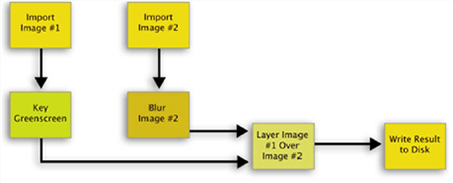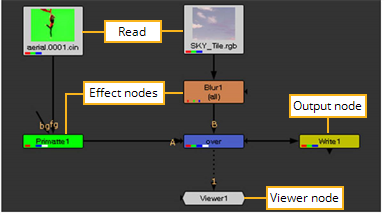
All Nuke products utilize a node-based workflow, where you connect a series of nodes to read, process, and manipulate images. Each node in the project - an image keyer, a color-correction, or a blur filter, for example - performs an operation and contributes to the output.

|
| A Nuke project consists of a network of linked operators called nodes. |
Saved projects are called script files. You can open a Nuke project file in a text editor, and you will see a series of sequential commands which are interpreted and executed when you render the output.

|
| A simple Nuke script. |
In the image above, you see an example of a very simple Nuke script. Two Read nodes reference image sequences on disk. Effect nodes extract a matte and blur an image. A Merge node (named over) composites the foreground image over the background. Finally, a Write node renders and outputs the completed composite to disk. You’ll also see a Viewer node, which displays the output of any node in the script.
NOTE: Nuke Assist does not support Write nodes or render farms. See Flavors of Nuke for more information.